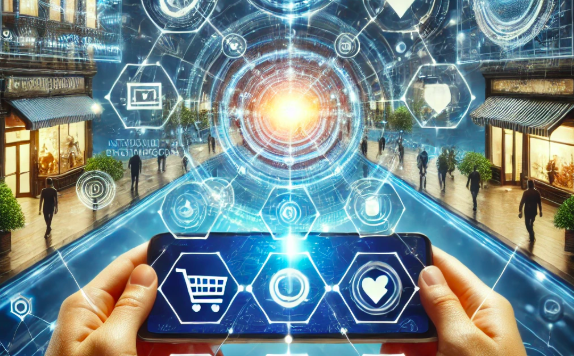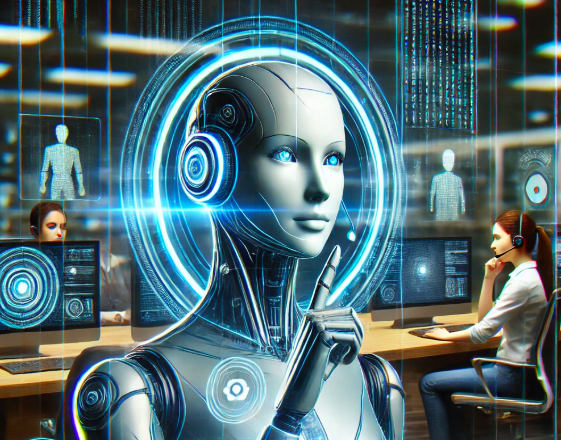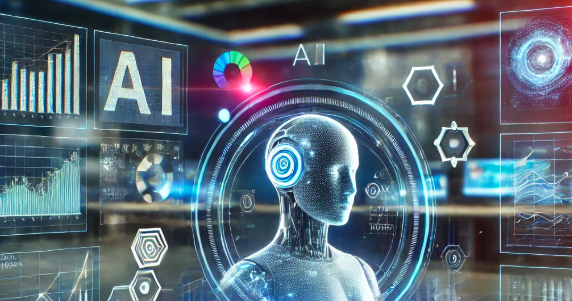
In today’s rapidly evolving marketplace, customer experience (CX) has become a pivotal differentiator for businesses aiming to thrive amidst heightened competition and shifting consumer expectations. As we look ahead, several key trends are poised to redefine how companies engage with their customers. Understanding these trends, their driving forces, and the strategies to leverage them is essential for businesses striving to stay ahead.
The 5 Major Trends Shaping the Future of Customer Experience
1. Hyper-Personalization Through AI and Big Data
What It Is: Hyper-personalization involves utilizing artificial intelligence (AI) and big data analytics to deliver highly tailored experiences to individual customers.
Why It’s Emerging: Consumers today expect interactions that are relevant and customized to their preferences. Advancements in AI and data analytics enable businesses to analyze vast amounts of data to predict customer needs and deliver personalized content, products, and services in real time.
Example: Netflix uses AI-driven personalization to recommend content based on individual viewing habits. Their machine learning algorithms analyze past behavior and genre preferences and watch time to tailor recommendations for each user.
Why It Matters: By continuously refining its AI models, Netflix keeps users engaged, reduces churn, and enhances customer satisfaction. This hyper-personalized experience has been key to their subscriber growth and retention.
2. Omnichannel Customer Engagement

What It Is: Providing a seamless and consistent customer experience across all channels, whether online or offline.
Why It’s Emerging: Customers interact with brands through multiple touchpoints, including physical stores, websites, mobile apps, and social media. They expect a unified experience regardless of the channel. Businesses are recognizing the need to integrate these channels to meet customer expectations and enhance satisfaction.
Example: Starbucks’ Rewards Program and mobile app integrate seamlessly across multiple channels, allowing customers to order ahead, earn points, and redeem rewards across mobile, in-store, and drive-thru experiences.
Why It Matters: Customers can start an order on their phone, customize it, and pick it up in-store without any friction—enhancing convenience and engagement across all platforms.
3. AI-Powered Customer Support & Self-Service

What It Is: The use of AI-driven tools, such as chatbots and virtual assistants, to provide customer support and facilitate self-service options.
Why It’s Emerging: There is a growing demand for quick, efficient, and 24/7 customer service. AI-powered solutions can handle routine inquiries, provide instant responses, and free up human agents to focus on more complex issues, thereby improving overall service efficiency.
Example: Bank of America’s AI-powered virtual assistant, Erica, provides customers with real-time financial insights, helps track spending, and even assists with transactions—all within the bank’s mobile app.
Why It Matters: AI-driven chatbots like Erica reduce wait times, improve service efficiency, and allow customers to get assistance 24/7 without needing to speak to a human agent.
4. Voice and Conversational Interfaces
What It Is: The adoption of voice-activated devices and conversational AI platforms that allow customers to interact with brands using natural language.
Why It’s Emerging: The increasing popularity of voice assistants like Amazon’s Alexa, Google Assistant, and Apple’s Siri has led consumers to seek similar conversational experiences with brands. This trend is driven by the desire for more convenient, hands-free interactions.
Example: Domino’s has integrated voice assistants like Amazon Alexa and Google Assistant, allowing customers to order pizza using voice commands. Their “AnyWare” technology even lets users order via smartwatches, Slack, and Twitter.
Why It Matters: This hands-free, frictionless approach streamlines ordering, making it more accessible and efficient for customers “on the go.”
5. Proactive Customer Engagement with Predictive AI

What It Is: Leveraging predictive analytics to anticipate customer needs and engage them proactively.
Why It’s Emerging: Customers appreciate when brands anticipate their needs and offer solutions before issues arise. Predictive AI analyzes customer behavior patterns to forecast future actions, enabling businesses to provide timely recommendations or interventions.
Example: Amazon’s predictive AI models anticipate customer needs by suggesting products before users search for them. Their anticipatory shipping model even allows them to pre-stock fulfillment centers based on forecasted demand.
Why It Matters: Predictive AI helps Amazon reduce delivery times, optimize inventory, and provide a proactive shopping experience, keeping customers engaged and increasing conversions.
Implications for Today’s Businesses
The emergence of these trends signifies a paradigm shift in customer expectations and interactions. Businesses must recognize that:
- CX is now a competitive necessity, not a differentiator: Delivering exceptional customer experiences has become a baseline expectation. Companies that fail to meet these expectations risk losing customers to competitors who do.
- Tech investments in AI, data, and automation are crucial: To implement these trends effectively, businesses need to invest in advanced technologies that enable data analysis, automation, and personalized customer interactions.
- A shift from transaction-based relationships to ongoing engagement: Building long-term relationships through continuous engagement and personalized experiences is essential for fostering customer loyalty.
How Your Business Can Capitalize on These Trends and Stay Ahead
To leverage these trends, businesses should consider the following strategies:
- Invest in AI and Predictive Analytics
Implement AI-driven tools to analyze customer data and predict behaviors. This enables personalized marketing campaigns, product recommendations, and proactive customer service interventions.
- Create a Seamless Omnichannel Strategy
Ensure that customers receive a consistent experience across all channels. Integrate online and offline platforms to provide a unified customer journey.
- Optimize for Voice and Conversational Commerce
Develop content and services that are accessible via voice commands. This includes optimizing websites for voice search and creating conversational interfaces for customer interactions.
- Adopt a Proactive, Data-Driven Customer Engagement Model
Use predictive analytics to anticipate customer needs and address them proactively. This could involve sending personalized offers or providing support before a customer encounters an issue.
- Foster Agility and Continuous Adaptation
Stay attuned to evolving customer preferences and technological advancements. Be prepared to adapt strategies quickly to maintain a competitive edge.
Now it’s in your hands
The future of customer experience is centered around personalization, seamless integration, and proactive engagement. By embracing these trends and implementing strategic initiatives, businesses can not only meet but also exceed customer expectations, leading to increased loyalty and sustained success.
Staying ahead in the evolving CX landscape requires a commitment to innovation and a customer-centric approach. Businesses that proactively adapt to these trends will be well-positioned to thrive in the future.

Leave a Reply